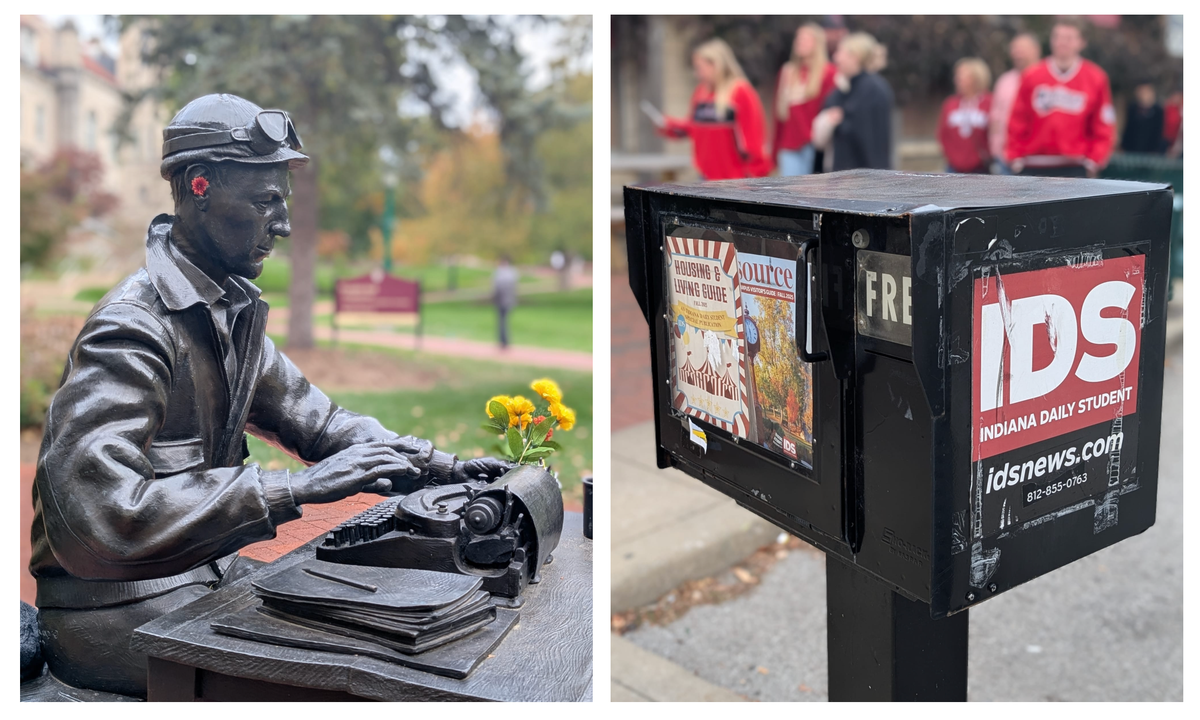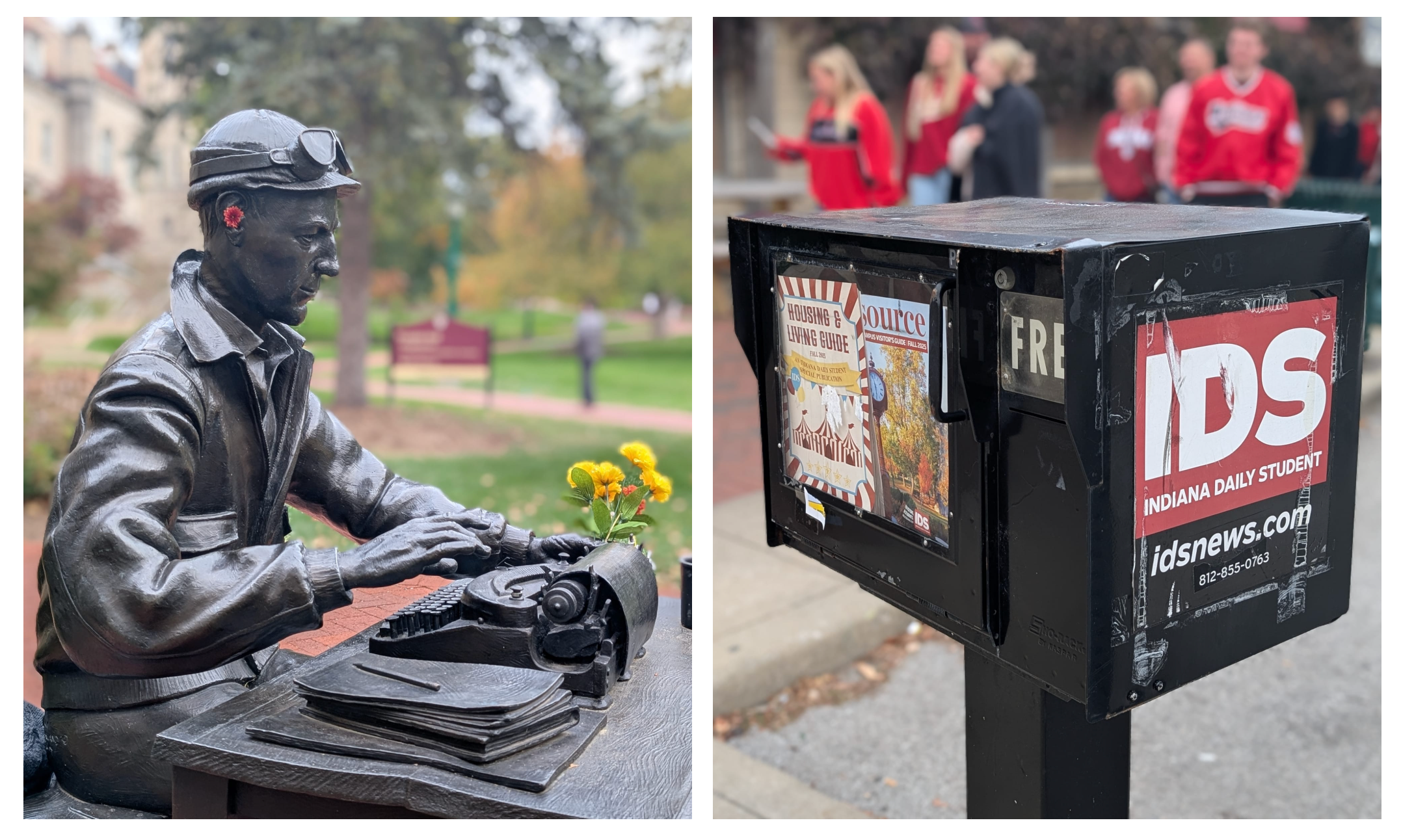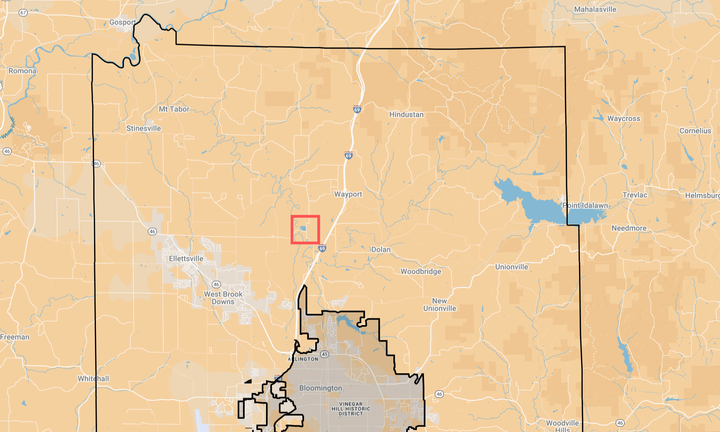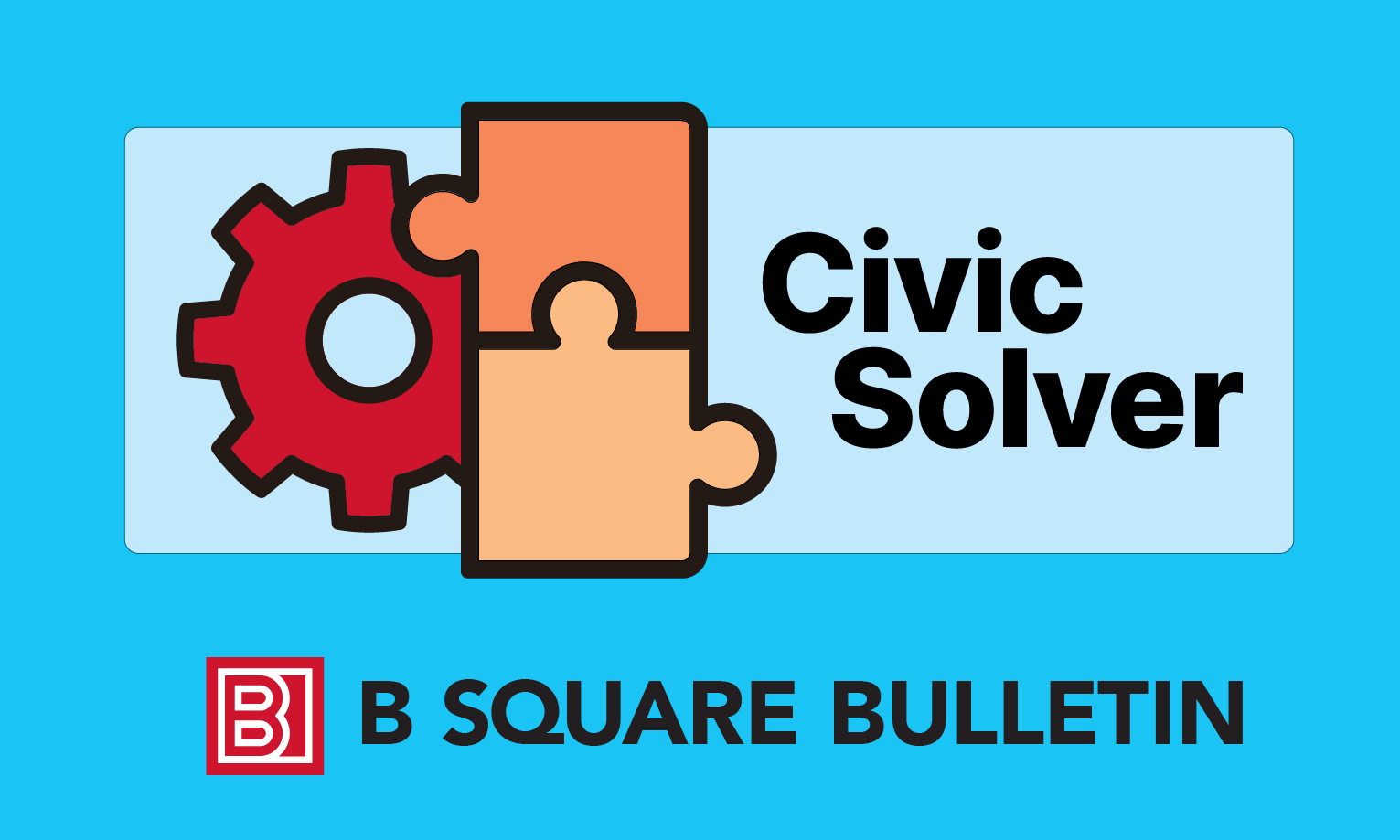Indiana Daily Student adviser’s firing sparks legal fight, faculty rebuke, new IU task force
Former Indiana University (IU) Media School director of student media Jim Rodenbush says he plans to sue the university for wrongful termination, after being fired Oct. 14 for refusing what he describes as an order to censor the Indiana Daily Student (IDS).


Former Indiana University (IU) Media School director of student media Jim Rodenbush says he plans to sue the university for wrongful termination, after being fired Oct. 14 for refusing what he describes as an order to censor the Indiana Daily Student (IDS). His termination was first reported that same evening by the IDS.
According to Rodenbush, Media School administrators directed him to prevent the student-run newspaper from publishing regular news in its planned Oct. 16 print edition. He declined, citing the 1969 IDS charter, which guarantees student editors full editorial control without prior review.
“I walked administrators through the charter, through the definition of censorship,” Rodenbush said. “The university can make budget decisions, ... but they have to be content-neutral.”
The IDS charter, which has been in effect since IU trustees approved it in 1969, states:
The chief student editors or leaders appoint their respective editorial staffs. The chief editors or leaders determine editorial content without prior review by the Director of Student Media, the Dean of the School of Journalism, the Student Media Board or any other faculty or administrative members or organizations of Indiana University. ... Final editorial responsibility for all content rests with the chief student editors or leaders.
Background: Student media restructuring
The dispute stems from a 2024 action plan for IU’s student media outlets: the IDS, WIUX student radio station and IU Student Television (IUSTV). The plan created a “converged media umbrella organization” to “eliminate the annual budget shortfalls associated with the operations” of the three organizations.
The action plan responded to an April 2024 committee report. The ad hoc committee consisted of Media School faculty, staff, students, and alumni. Part of its assignment was to generate recommendations for “restructuring student media operations and finances with an eye to future sustainability.”
The action plan included a “strategic reduction in the IDS print edition beginning in the spring semester of 2025.” Weekly print editions were suspended, while special editions were to be printed regularly through the academic year. Beginning in the spring, the IDS started printing a limited number of special editions. These contained special edition inserts, but had regular news printed on front pages. That same system has continued this fall: three print editions were published on Aug. 21, Sept. 4, and Sept. 25 this semester.
What exactly is a special edition?
Following the publication of the Sept. 4 paper, Rodenbush had several meetings with Media School administrators, he said. Over the course of those meetings, it emerged that administrators and Rodenbush had significantly different expectations for special print editions. Rodenbush said administrators were concerned that “the paper still looks like a paper,” rather than containing only special edition content.
It wasn’t until a mid-September meeting that he understood “that this was an expectation and not a suggestion,” Rodenbush told The B Square. The order to prevent the IDS from printing news in its next special edition, he said, came before the scheduled Oct. 16 publication of the homecoming issue.
“I know that people are locked into the homecoming edition,” Rodenbush said. “I actually think the fact that the issue that happened to be canceled was the homecoming issue was simply a coincidence.”
Censorship or cost-cutting?
The university maintains that attempting to alter printed content was a financial matter, not a violation of editorial independence.
In a statement, dean Tolchinsky is quoted as saying: “The Media School remains deeply committed to the editorial independence and financial sustainability of student media.”
IDS editors-in-chief Mia Hilkowitz and Andrew Miller dispute that, characterizing the university’s decision as blatant administrative censorship. In an Oct. 14 editorial they wrote: “Telling us what we can and cannot print is unlawful censorship, established by legal precedent surrounding speech law on public college campuses.”
Legal representation for Hilkowitz and Miller is being provided by Kristopher L. Cundiff of the Reporters Committee for Freedom of the Press (RCFP). In a letter to IU leadership, Cundiff wrote: “IU’s actions violate the First Amendment because they were taken in direct response to the IDS resisting the University’s mandate to limit the on-campus print edition to non-journalistic content.”
Dollars and deficits
The IDS had a deficit of about $300,000 in 2024, according to the Media School action plan. The Media School makes up for the IDS’s fiscal shortfalls each year.
In a phone interview this week, Rodenbush told The B Square that in fiscal year 2025, the IDS’s budget was around $800,000. It generated around $600,000 in revenue. Rodenbush said personnel costs are the IDS’s biggest expense. Before his termination, he said, the newsroom had four full-time professional staff members.
Students are also paid for their work. The editors-in-chief receive $250 per week, marketing and advertising roles are typically paid hourly, and reporters are compensated on a per-project basis, which has a varying pay scale but is typically about $10 per piece.
“The people and printing alone, combined, [was] about 90 percent of our expenses,” Rodenbush said.
IDS expenses also include the cost of the physical space that the IDS uses—what’s commonly called the IU space tax. That is approximately $25,000 per year.
Rodenbush said over 90 percent of the organization’s revenue comes from advertising. While the ratio between print and web ads fluctuates, Hilkowitz and Miller reported that the first three print editions of the semester have generated nearly $11,000 in profit.
Rodenbush said that the Student Media Action Plan has been successful. Reducing the number of printed editions each semester was pitched as a business decision, he said.
Reducing the print schedule has not translated into the kind of savings projected in the action plan, Rodenbush said. “But each of the issues continue to make money,” Rodenbush continued.
“If you just look at the flat cost of what it cost us to put this paper out into the world, we were in the black with all of these issues,” he said. “The business decision had already been made, and it was actually working, in terms of both reducing the print schedule and continuing to make money with the special editions.”
After Rodenbush’s termination, IU cut the print edition of the IDS entirely. “It was not a smart business decision,” Rodenbush said, “because [the remaining printed products] were gigantic sources of revenue.”
He continued, “[IU] took my salary off the books, but I heard that they’re going to hire a new person, so that salary is coming right back. And so, this decision they made eliminated half the revenue and didn’t do anything with expenses. This deficit is not going anywhere anytime soon.”
The April 2024 committee proposal compared student media organizations to student ballet and opera performances at the Jacobs School of Music, and IU Student Government, which they say do not, and are not expected to, cover their expenses.
The committee wrote, “We argue that, like those activities, IU’s student newsrooms should be financially supported by the university because of the essential ‘experiential and career-related student experiences’ they provide to hundreds of IU students each year.”
Faculty and alumni reaction
The decision to end print publication drew criticism from current and retired Media School faculty. Fourteen retired faculty members wrote a letter directed at leadership. The letter demands that if Media School administrators “do not accept and support the independence of the IDS that the Indiana University Board of Trustees protected in the 1969 charter, they should make way for leaders who do.”
Among the signatories was Jim Kelly, former associate professor of journalism at the Media School, who retired in January after becoming a faculty member in 2007. He told The B Square, “That charter, though I was not here in 1969—that charter was hard fought. ... It was negotiated with the students and the university in the spirit of independent inquiry and providing a student voice at a time of considerable social unrest. ... It’s worked well since then, until last week.”
He said, “This is a terrible teaching moment, in that the lesson … is being taught using a pedagogy that is, I think, a violation of their rights as citizens.” However, he said, “It is a learning moment for the students. There’s no question about that.”
He continued, “It’s incredible, and unfortunate. This is not the way that students should be learning about the value of free press. They should be learning that in a classroom, in a lecture, not being forced to defend themselves against a huge university.”
Current Media School faculty members also crafted a letter, saying they “are appalled by ... [the] decision to cut the print edition of the Indiana Daily Student hours before publication.” They call for the school to “produce a complete, independent accounting of the events of the last week and take ambitious, meaningful actions to show their commitment to journalism’s future.”
“We stand ready to join a conversation about next steps,” they wrote.
When The B Square requested an interview with Tolchinsky, IU spokesperson Teresa Mackin pointed to a Media School announcement about the creation of a task force.
Next steps: legal, administrative
On Oct. 20, Tolchinsky announced a “Task Force on the Editorial Independence and Financial Sustainability of the Indiana Daily Student (IDS)/Student Media.” The announcement says the task force will expand on earlier work, including the April 2024 proposal.
Meanwhile, Rodenbush told The B Square in an interview on Oct. 23 that he is currently being represented by attorney Jon Little of Saeed & Little. “The intent is to sue IU,” Rodenbush said.
Little told him on Tuesday (Oct. 21) that the firm was in the process of drafting a complaint. He said there are a couple of possible strategies for the lawsuit. “This is obviously retaliation for not carrying out this order,” he said. He also said the order contradicted his job description: “The charter was mentioned on my offer letter back in 2018, and the charter is very, very clear on what a person in my role can and cannot do.”
Some commentators, such as Abdul Hakim-Shabazz of Indy Politics, are suggesting that the student reporters at IU should pivot and start an independent outlet.
Miller, co-editor-in-chief of the IDS, told The B Square in an interview that he and other student journalists are looking ahead and considering their options. First, he said that they need to make sure the findings of the task force “have teeth.” Miller added, “We need to make sure that there is binding power to what the committee decides. We need to make sure that students are involved.” Beyond that, he did not comment on a strategy, because “a lot is still in motion.”
“Our strongest defense is just producing good quality journalism and being essential to our community,” Miller said. He used the word “galvanized” to describe IDS student journalists. He’s proud of the quality of recent pieces: coverage of city government, protests, Ellettsville Town Council, and more. “I’d say that one of the best articles we’ve put out was the story about the Jewish Studies director.” The article is about the sudden and unexplained replacement of the IU Borns Jewish Studies Program director.
Miller said that he thinks at least some of the recent high-quality work might be a “consequence of the fire that’s been lit under them.” Miller also said the IDS website this month has seen the highest view count since September 2023.
Broader context: Student media nationwide
Research done by the ad hoc committee for the April 2024 proposal included analysis of student media organizations nationwide and their financial struggles. The proposal cites a 2024 report from the University of Florida’s Brechner Freedom of Information Project on 512 student newspapers’ financial structures around the country.
The report found that more than half (56%) of student news outlets receive funding from their associated university or college. Only 10% of the outlets studied were classified as 501(c)(3) nonprofits. Even many of those are financially supported by the universities. That research team also created an interactive map of college news outlets nationwide.
Some of the leading journalism programs across the country have student papers that are financially independent of the school. Examples include: The Maneater (University of Missouri), The Daily Orange (Syracuse University); The Daily Northwestern (Medill School of Journalism at Northwestern University); Columbia Daily Spectator (Columbia University in New York); and The Harvard Crimson (Harvard University), which are all financially independent student newspapers and governed independently.
The Maneater is described on its website as “an independent legal entity or independent association of individual students.” The Daily Northwestern is published by Students Publishing Company, a nonprofit corporation, and governed by its board that is composed of alumni, faculty, staff and student volunteers. The Daily Orange is operated as a nonprofit. The Columbia Daily Spectator has been financially independent from the university since 1962, published by Spectator Publishing Company, a nonprofit corporation. The Harvard Crimson is also a student-run nonprofit organization. In 2024, The Crimson raised $15 million that was put into a trust.
IDS co-editor Miller told The B Square, “Our ultimate goal is that the university puts more emphasis on journalism education, and allows us more freedom financially and editorially.” He said that the students acknowledge that there’s “a lot of unwritten responsibility” that goes into leading a 158-year-old student publication.




Comments ()